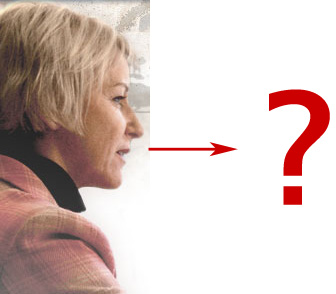 The 2004-2009 Barroso Commission is starting to wind down. Brussels has its eye on the European Elections in June, and the selection of a new Commission due to take office from 1st November.
The 2004-2009 Barroso Commission is starting to wind down. Brussels has its eye on the European Elections in June, and the selection of a new Commission due to take office from 1st November.
One of the Commissioners for whom I have developed quite some respect since 2004 is Margot Wallström; she has a refreshingly frank approach that has won her some friends outside the Commission (although few inside it by all accounts) and has been determined and diligent in making the most of a near-impossible task – communicating the EU. However Margot has no intention of serving a further term, and even if she wanted to the centre-right Swedish administration would not nominate her (Wallström is a Social Democrat).
So what should the new Communications Commissioner actually do? I assume the portfolio will still exist; as far as I’m concerned it’s still very much needed.
When Neil Kinnock was European Commissioner for administrative reform between 1999 and 2004 he had basically one task for his 5 year term: to sort out the Commission staffing regulations and recruitment procedures. Tedious you may argue, but something that was long overdue and vital. The sole overriding task facing the new Commissioner for Communication is no less pressing: to sort out the European Commission’s websites.
First of all, the context – these are the stats for europa.eu against direct.gov.uk and whitehouse.gov from Alexa:

Europa.eu – i.e. all of the EU institutions websites – have a 3 month average of 1475 – quite respectable – and this holds up quite well against the 2 other governmental sites plotted. Essentially there are people visiting the EU’s websites. Problem is what they find when they get there. This is what the Communications Commissioner should look at.
Each and every Directorate General of the European Commission has its own website, and nearly all of them are gruesome and ugly. The information is structured along the lines of the pieces of legislation and the institutions involved, not according to what benefit a citizen could get from what the European Union is doing in a particular field.
I was inspired to write this post when looking for information on EU air passenger rights, one of the EU’s best known policies. This is the webpage for it. Messy and unclear, and to understand the policy you have to download a PDF. But you do get a cheesy pic in the corner of Antonio Tajani, the Transport Commissioner. Thank you. Try looking for something more complicated – like how much airline tickets have reduced in price since EU-wide airline liberalisation – and you draw a blank. I simply cannot find any comprehensible data on that. Easyjet and Ryanair would not exist without the EU and the Commission cannot manage to communicate such an important issue. Also why does the Air page on DG TREN’s website have news about all transport modes on it? And why is the air page on Europa.eu so utterly dull and incomprehensible?
Take these issues with one small policy issue and multiply by 100 or 1000 and that’s the European Commission’s web ‘strategy’. Even the Google trick – putting site:europa.eu at the front of your search term – doesn’t help much.
So while it would of course be good to see the new Commissioner blogging as Margot has done, using Twitter, establishing a presence on Facebook etc., all of these issues are rather superfluous. Until citizens can actually locate the information they need on the European Commission’s websites everything else should be secondary. New Communications Commissioner: make that your priority!








I think she tried, but people overestimate the powers of Commissioners. They come and go. Functionnaires are Forever. They seem to have spent a lot of time on institutional reform, and churned out a great many white papers and action plans … but nothing has changed, in practice, barring a few more pages in a few more languages.
How about setting up a ‘Best and Worst’ awards, John? Reding’s Roaming Prices site is worth a look (disclosure: I led the build back in 2005) – because it actually showed comparative data , it got a lot of traffic back then, which was crucial in convincing Barroso to go ahead with Reding’s Roaming Regulation. These days it’s emphasising SMS, though, where the comparisons aren’t exactly earth-shattering.
The roaming regulation was a good communications story. Is this site the only time a website has actually influenced legislation in Europe, or are there others?
in addition:
make webpages multilingual: http://create2009.europa.eu/ – mid-April and still no French, German, Spanish, Italian, Polish, Czech Swedish etc.
make europa.eu a smart portal, integrating useful tools like EU calendar, EU press room – not just small banners
bundle best practice projects for each member state and each policy
make raw data accessible and present it appealingly, eg. on beneficiaries of EU money or projects or action plans or infringements or etc.
EU communications in general: reduce and streamline activities. European citizens don’t need each DG to run hundreds of youth competions
last and most important: get a EU communications policy for all institutions, bundle communications competence to just one DG, this would solve most of the problems. I know that Wallström tried this but failed.